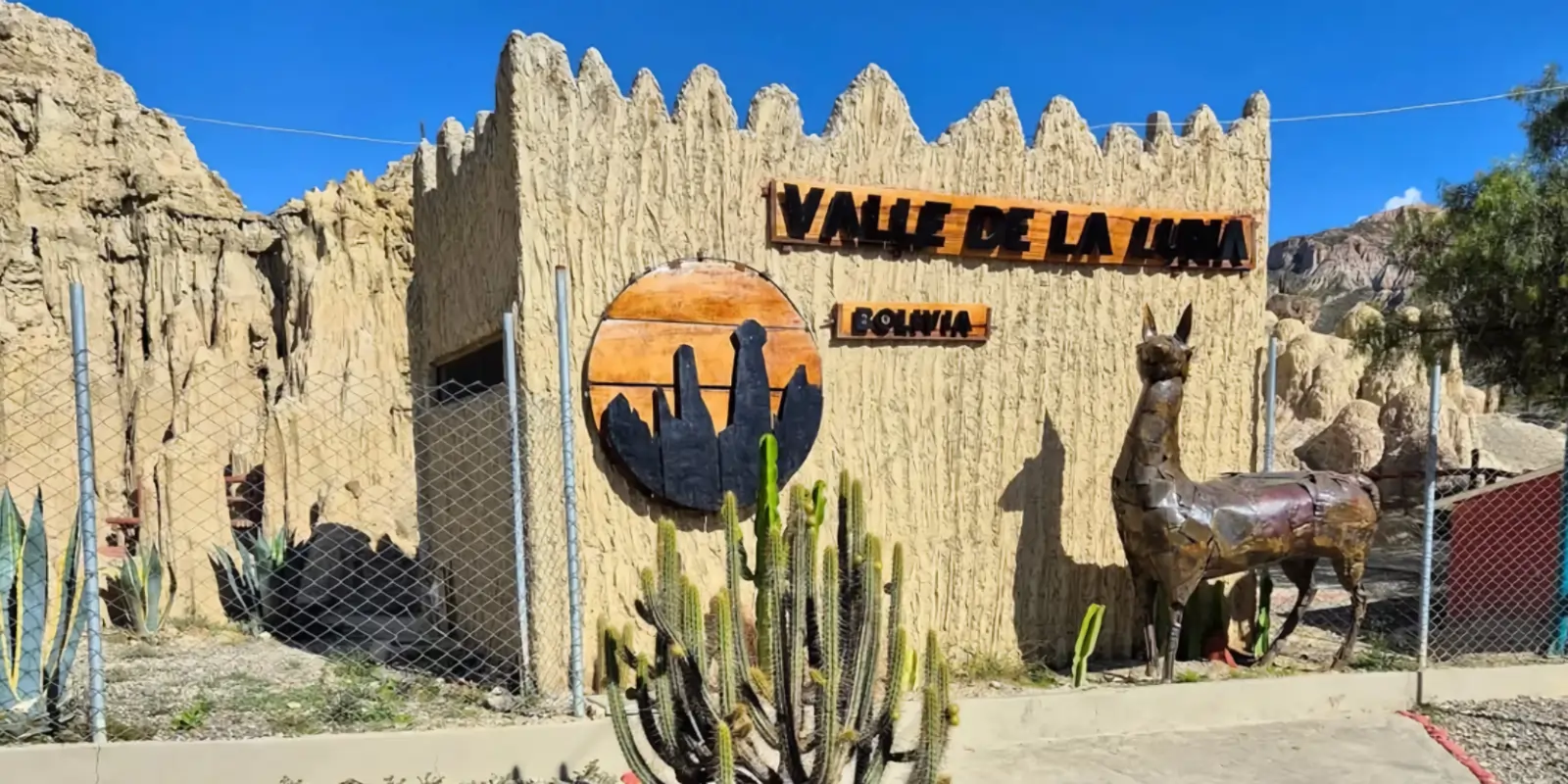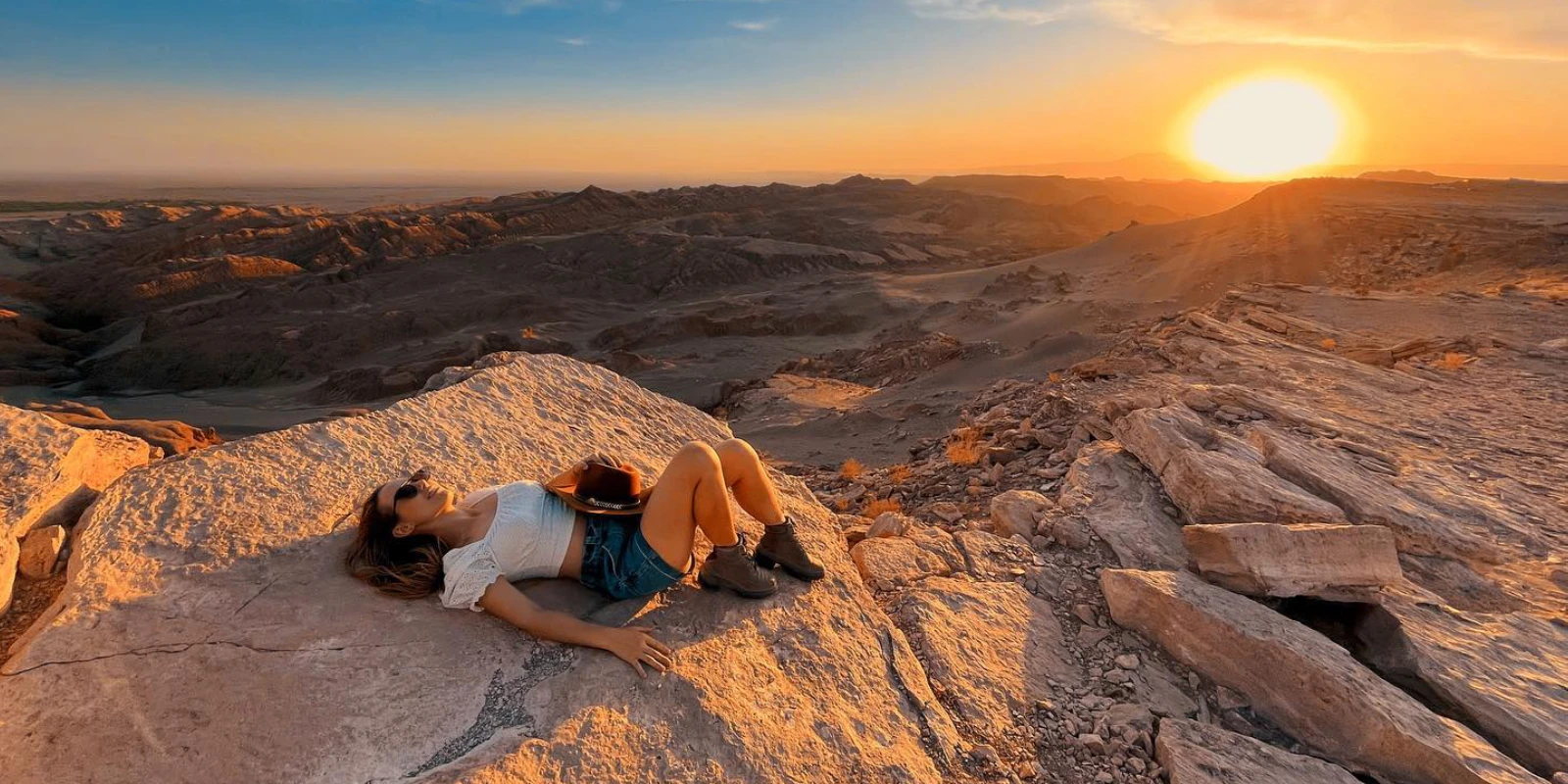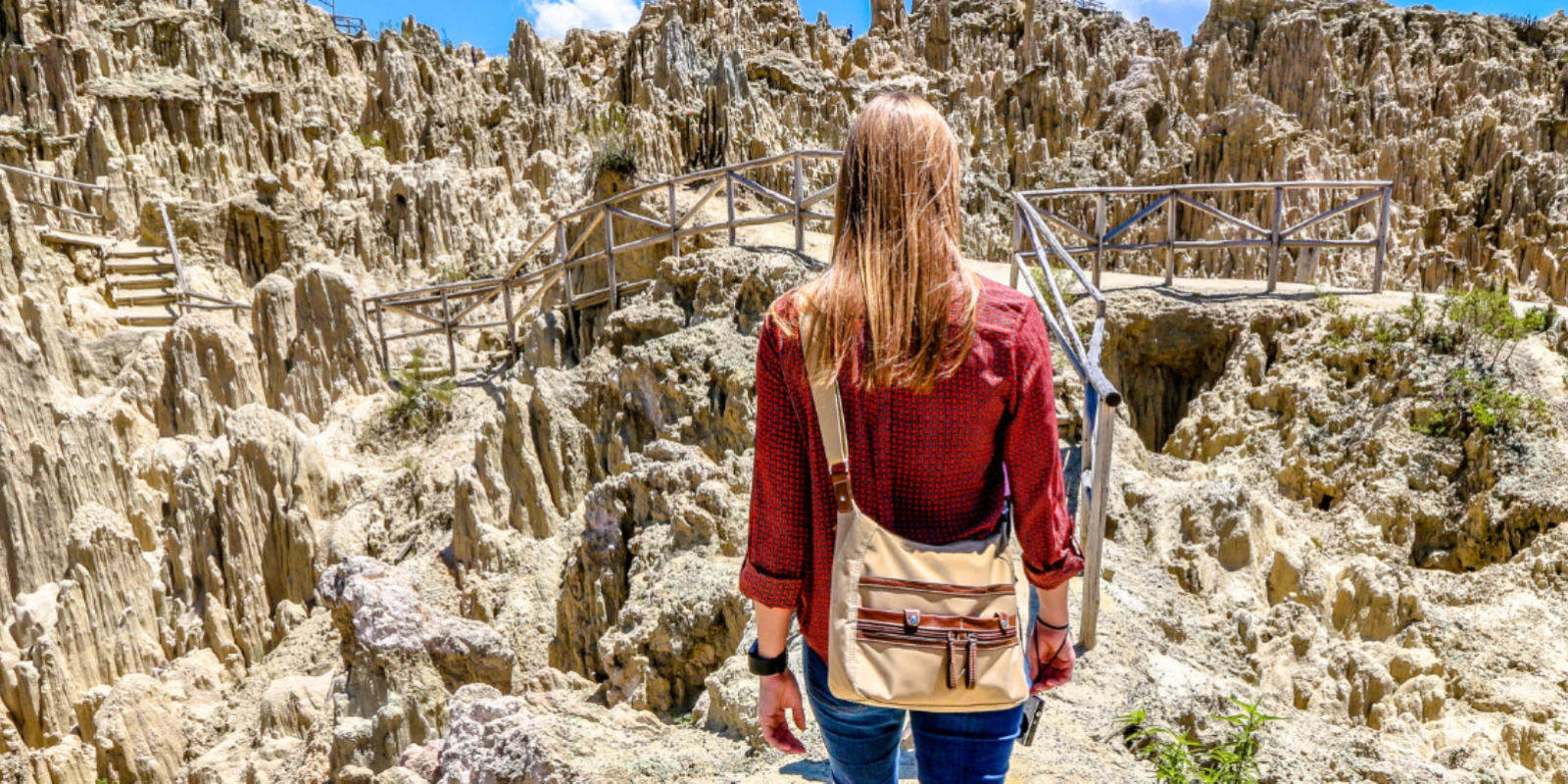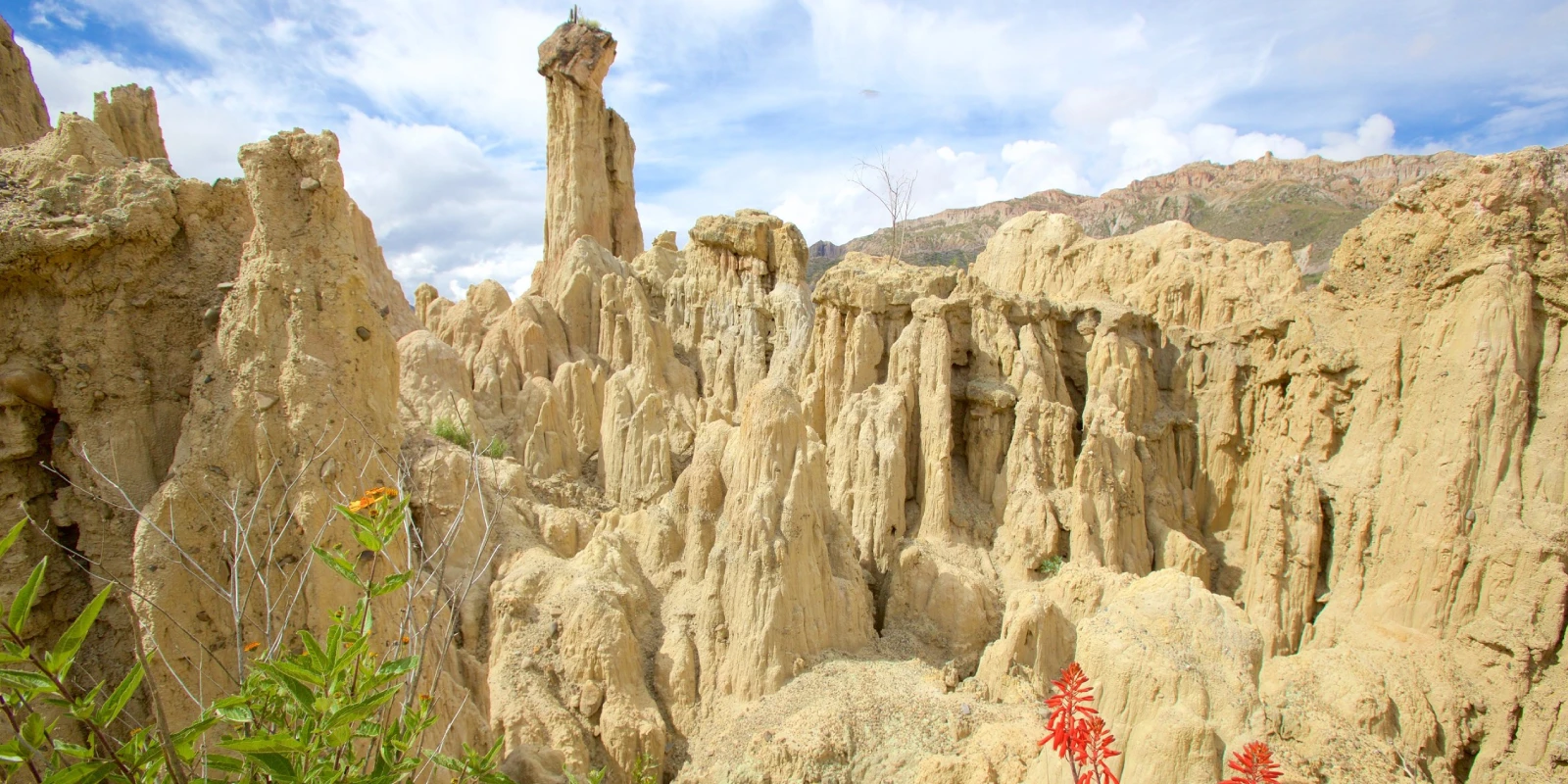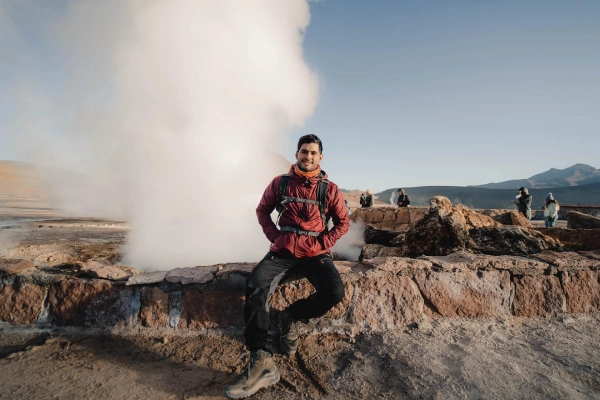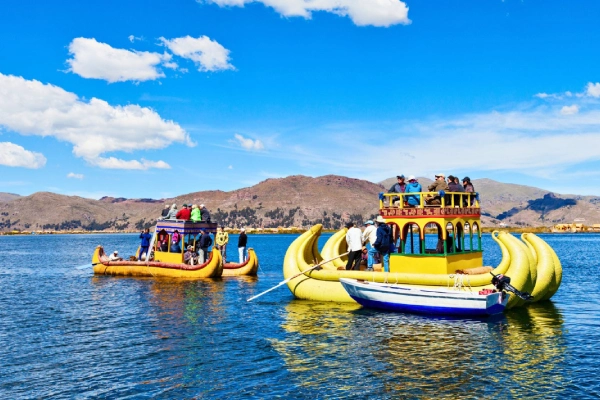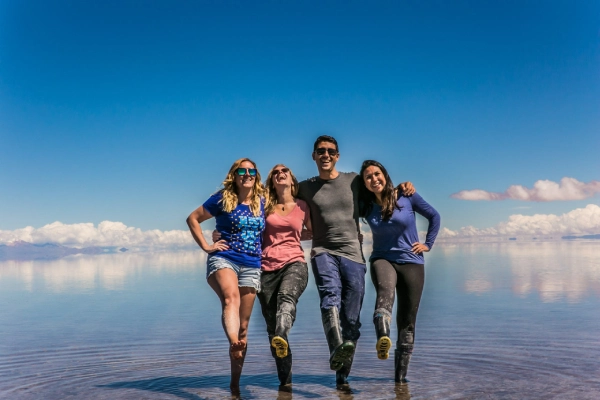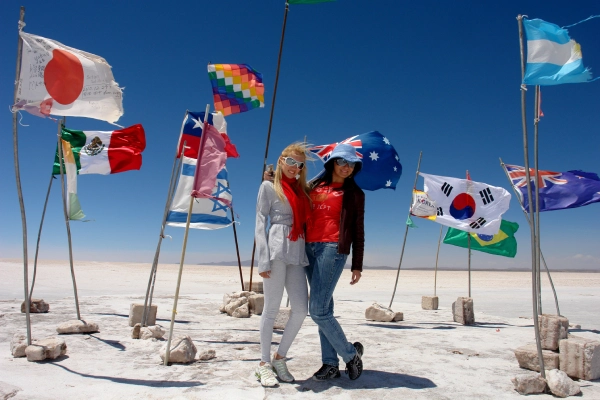Discover the diverse and enigmatic aspects of La Paz, from its bustling streets to its contemporary cable cars, without overlooking any detail. The influence of the indigenous Aymara culture is felt throughout the city.
The exotic, breathtaking beauty of La Paz can be appreciated from notable viewpoints such as Killi Killi, as well as unique places like Moon Valley-Valle de la Luna, known for its peculiar geological formations.
Be sure to visit the Square Plaza Murillo, a historical landmark, and the Mercado de las Brujas, (Witches’ Market) an exotic mystical market of La Paz.
Itinerary
City Tour and Moon Valley Full Day
Our excursion tour will start at 9:00 am and our first stop will be the church of San Francisco, then we will head to Sagarnaga street to explore the infamous street of witches. We will then take the bus to Jaén street to visit several museums including the costumbrista museum, Pedro Domingo Murillo’s house and the ethnology and folklore museum.
We will then visit Square Plaza Murillo and see the government palace before heading to the Quilli Quilli viewpoint in the northern part of La Paz where we will see a stunning panoramic view of the city of La Paz.
Around midday, we will have a typical Bolivian lunch.
In the afternoon, we will visit the southern part of the city to explore the valley of the moon for about 2 hours.
We will then travel on the yellow line of the cable car from the southern area to the central area of Sopocachi, which will be an extraordinary experience.
The tour excursion will end around 17.30.
Places to visit: Church of San Francisco “Portada”, Cable Car, Calle de las Brujas- Witch’s street-, museums, Square Plaza Murillo and Moon Valley.
Duration of the tour excursion: 7 hours.
RECOMMENDATION.
To visit the Salar de Uyuni: it is best between the months of January – March, it is conditional our visit to Incawasi Island, depending on the amount of rain over the place.
Included
TOUR INCLUDES
- Hotel pick up.
- Transport.
- Specialized bilingual guide.
- Entrance fees
- Lunch
- Cable car tickets.
THE TOUR DOES NOT INCLUDE
- Extra expenses
- Drinks.
WHAT TO BRING
- Comfortable, warm clothing.
- Comfortable shoes (ideally hiking shoes).
- Swimming costume and towel
- Sunglasses.
- Sun block lotion.
- Water bottle
- Camera
- Passport.
CONTACT US
GENERAL CONDITIONS
- All rates for our Packages to Bolivia are expressed in US dollars (optional for currency exchange) and are programmed per person.
- The rates valid for Peruvians only include IGV
- All our rates are subject to availability and changes.
- Children under 02 years and 11 months are considered INF (babies), do not pay any service and do not have the right to food, bed or seat on the tours.
- DCC (child) is considered a child from 03 to 10 years and 11 months, has a special rate and shares a room with parents.
- Children over 11 years old considered adults.
- Minors must travel with an identity document.
- Rates do not apply to holidays, Easter, long weekends, national holidays, Christmas or New Years.
More Information
Uyuni Salt Flat
The Salar de Uyuni is the largest continuous high salt desert in the world, with an area of 10 582 km², located at an altitude of 3650 m above sea level in southwestern Bolivia.
Salar de Uyuni is such a vast salt desert that it can be seen from space. This makes the endless white sheet that is the Salar de Uyuni seem to blend into the sky on the distant horizon. The salt flat reflects the clouds, when it is slightly covered with water. Especially between the months of January and March, during the rainy season.
The best time to visit and enjoy the Salar de Uyuni is November, the breeding month for the three species of elegant flamingos that live near the many lagoons.
Location of the Salar de Uyuni?
In the southwest of Bolivia, in the department of Potosi, lies the Salar de Uyuni, the largest desert in the world, a saline desert so vast that it can be seen from space.
Altitude
It is 3,650 meters above sea level.
When to travel to the Salar de Uyuni?
The Salar de Uyuni has two distinct seasons.
The rainy season, which runs from December to April, is the time when visitors come to witness the overwhelming mirror effect of the salt flat. It is recommended to take into account the excessive rainfall, which is from December to January, maybe can be cancelled for these reasons.
During the dry season from May to November, temperatures are cooler, During the dry season from May to November, temperatures are cooler, the ground is hardened and travelers can drive through the stark white landscape passing through places that are inaccessible during the rainy season.
How to get to the Uyuni Salt Flat
The Salar de Uyuni is located between Bolivia, Chile and Argentina, depending on where you are coming from.
Air Flight. From La Paz 1 hour
Land transport. From La Paz 8. Hours Travel time.
Things to see and/or do in Salar de Uyuni
Train cemetery.
Salt, lots of salt.
The Dakar Rally flags and monument.
Incahuasi Island (Isla del Pescado): one of the many islands full of gigantic cacti.
Sunset reflections on the water of the salt flat (at certain times of the year).
Starry nights, among others.
Train Cemetery
The large cemetery of dead trains, adrift since the 19th century, located halfway along the road to Uyuni. Rust-ridden wagons and locomotives are scattered across the icy ground of the Bolivian altiplano.
The train cemetery has become a place full of stories and memories of the past, where visitors see the ruins of looted trains from the past.
Mirror effect on the Uyuni Salt Flat
At the end of the rainy season (February-March), the salt flat changes, creating a mirror effect thanks to a mineral called Ulexite, the “television stone”. It is transparent and has the power to refract the image of the surface.
The salt becomes impermeable and causes water to accumulate on the surface, creating a unique mirror.
Watching the sunrise with this great reflection created by the salt flat is something indescribable that all travellers to the salt flats will never forget.
How to get the best pictures?
One of the highlights of the Salar de Uyuni is the endless horizon that allows photographers to play with perspective and depth of field.
The key to taking the best photos is to get the camera as low as you can and as close to your subject as possible. This provides a perspective in which the subject is larger than the human subjects, who would be further away.
But don’t let your subjects venture too far away: the further the distance between the object and the subject, the harder it is to maintain focus. If your camera allows it, make the aperture as narrow as possible.
Price
HOW MUCH?
We have price alternatives that accommodate all budgets, prices per person, expressed in US Dollars.
Make your quotes and reservations by email [email protected], you can also communicate with one of our sales executives at the telephones detailed below, we will be happy to assist you.
Phone – WhatsApp: +51 969 787 221
Phone – WhatsApp: +51 986 994 218
HOW TO BOOK THE TOUR?
To start the reservation process, please send us the following information:
- Name and surname:
- Passport number:
- Nationality:
- Date of Birth:
- Phone:
- Very important – We need the address and information about the hotel that you are staying at, in the city of Salar de Uyuni, to be able to pick you up at the time when the tour starts.
To confirm reservations it is required to pay 50% in advance and the other 50% can be paid upon arrival at your destination.
PAYMENT METHODS
- IZIPAY
- PAYPAL
- WESTER UNION
- MONEYGRAM
- TRANSFER TO OUR BANK ACCOUNT PERU

